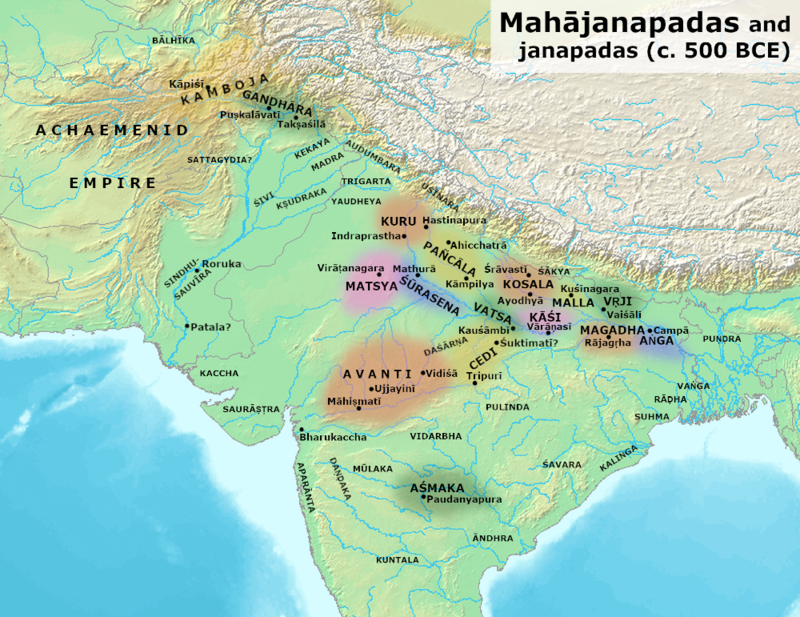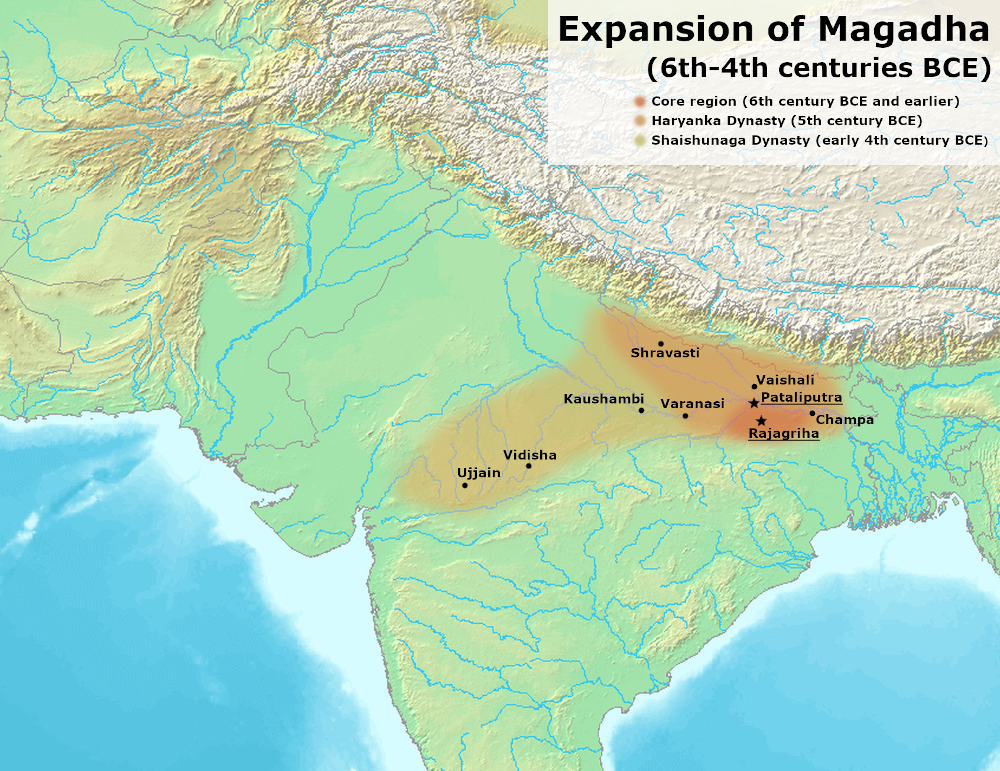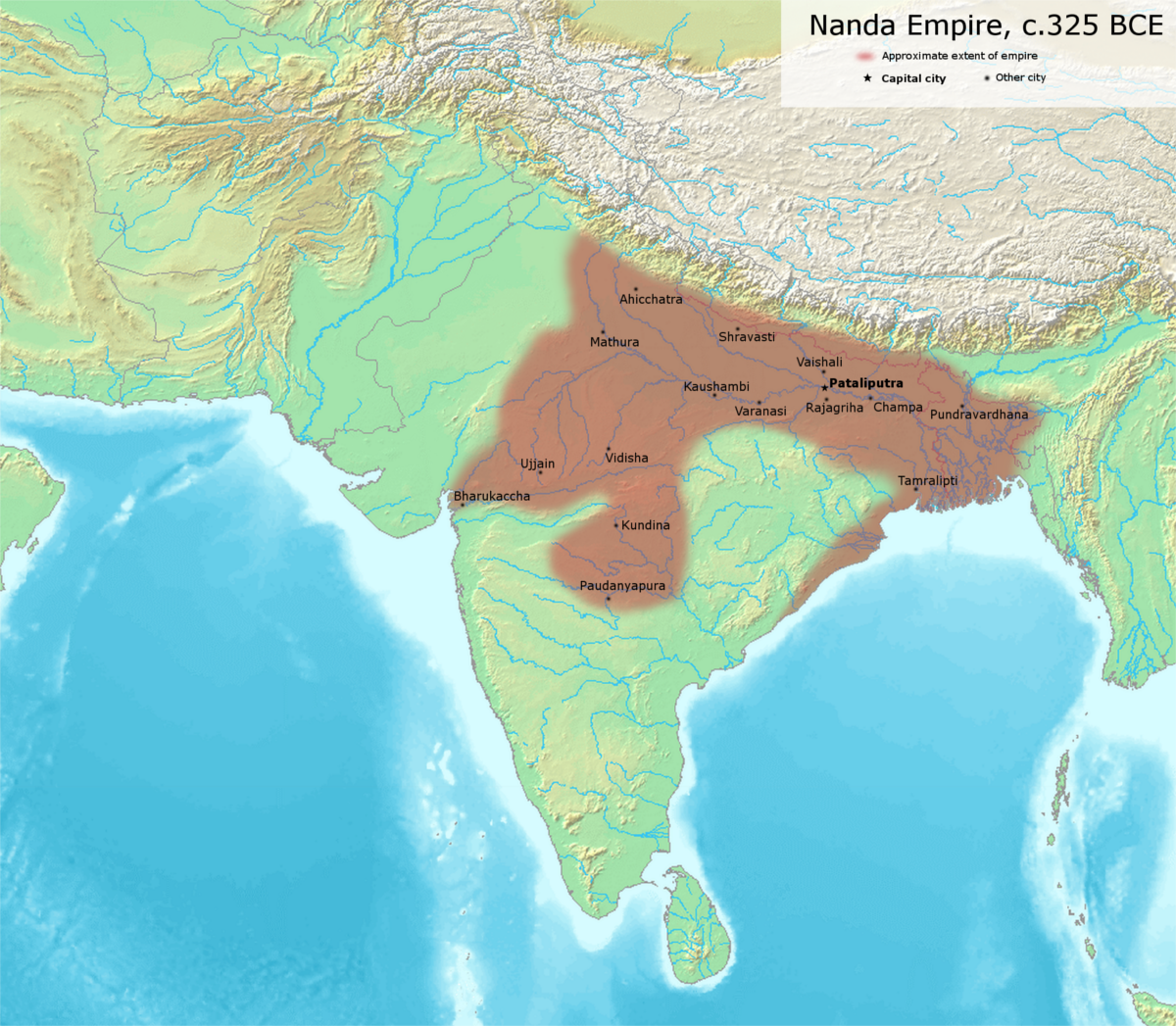Static Quiz 15 December 2022
Quiz-summary
0 of 5 questions completed
Questions:
- 1
- 2
- 3
- 4
- 5
Information
Static Quiz 15 December 2022 for UPSC Prelims
You have already completed the quiz before. Hence you can not start it again.
Quiz is loading...
You must sign in or sign up to start the quiz.
You have to finish following quiz, to start this quiz:
Results
0 of 5 questions answered correctly
Your time:
Time has elapsed
You have reached 0 of 0 points, (0)
Categories
- Not categorized 0%
- 1
- 2
- 3
- 4
- 5
- Answered
- Review
- Question 1 of 5
1. Question
Which of the following statements about Mahajanapadas are correct?
1. All Mahajanapadas were monarchy
2. Mahajanapadas were formed sixth century BC onward.
3. The most prominent feature of Mahajanapadas is the formation of states.CorrectAns;- b) Only 2 and 3
Explanation;-
• Not all Mahajanapadas were Monarch few were Republic too that’s why 1st statement is incorrect.About Mahajanapadas
• Kingdoms that rose to fame from 6th Century BC onward were called Mahajanapadas.
• The Mahajanapadas signify the tribes that came together to form different groups and later gave rise to a permanent area of settlements called ‘states’ or ‘Janapadas.’
• Mahajanapadas were formed sixth century BC onward.
• The most prominent feature of Mahajanapadas is the formation of states.
• With the rise of Mahajanapadas, the political history of North India became clearer.
• 16 Mahajanapadas had both republics and monarchies Incorrect
IncorrectAns;- b) Only 2 and 3
Explanation;-
• Not all Mahajanapadas were Monarch few were Republic too that’s why 1st statement is incorrect.About Mahajanapadas
• Kingdoms that rose to fame from 6th Century BC onward were called Mahajanapadas.
• The Mahajanapadas signify the tribes that came together to form different groups and later gave rise to a permanent area of settlements called ‘states’ or ‘Janapadas.’
• Mahajanapadas were formed sixth century BC onward.
• The most prominent feature of Mahajanapadas is the formation of states.
• With the rise of Mahajanapadas, the political history of North India became clearer.
• 16 Mahajanapadas had both republics and monarchies
- Question 2 of 5
2. Question
Which of the following reasons were the reasons regarding Magadha Kingdoms being Powerful among 16 Mahajanapadas?
1. Magadha was important for transport and trade, and its fertile regions made agriculture prosper.
2. Parts of Magadha were forested and elephants from there were trained to fight for the army.
3. Magadha had many powerful rulers such as Bimbisara and Ajatsatru of the Haryanka dynastyCorrectAns;- d) All of the above
Explanation;-
• All the reasons are correct regaridng Magadha Kingdom being powerfulAbout Magadha Kingdom
• Drained by the Ganges and the Son rivers, Magadha became the most powerful Mahajanapadas in ancient India.
• Magadha was important for transport and trade, and its fertile regions made agriculture prosper.
• Parts of Magadha were forested and elephants from there were trained to fight for the army.
• Forests also provided wood, and the iron mines in the region provided the metal to make strong weapons and tools.
• Magadha had many powerful rulers such as Bimbisara and Ajatsatru of the Haryanka dynasty, and Mahapadma Nanda of the Nanda dynasty.
• Rajagriha was the capital of Magadha for many years, and later the capital was moved to Pataliputra.
• In around 300 BCE, Alexander had conquered half of the known world and wanted to conquer India next. But stories of the glorious army of Magadha instilled fear in his armies who were already exhausted, so he returned to Europe. Incorrect
IncorrectAns;- d) All of the above
Explanation;-
• All the reasons are correct regaridng Magadha Kingdom being powerfulAbout Magadha Kingdom
• Drained by the Ganges and the Son rivers, Magadha became the most powerful Mahajanapadas in ancient India.
• Magadha was important for transport and trade, and its fertile regions made agriculture prosper.
• Parts of Magadha were forested and elephants from there were trained to fight for the army.
• Forests also provided wood, and the iron mines in the region provided the metal to make strong weapons and tools.
• Magadha had many powerful rulers such as Bimbisara and Ajatsatru of the Haryanka dynasty, and Mahapadma Nanda of the Nanda dynasty.
• Rajagriha was the capital of Magadha for many years, and later the capital was moved to Pataliputra.
• In around 300 BCE, Alexander had conquered half of the known world and wanted to conquer India next. But stories of the glorious army of Magadha instilled fear in his armies who were already exhausted, so he returned to Europe.
- Question 3 of 5
3. Question
Which of the following statements about Social Life of Delhi Sultanate are correct?
1. There was little change in the structure of the Hindu society during this period. Traditional caste system with the Brahmins on the upper strata of the society was prevalent.
2. The Muslim nobles occupied high offices and the Hindu nobles were given high position in the government.
3. The Hindus were considered zimmis or protected people for which they were forced to pay a tax called jiziya.CorrectAns;- c) Only 1 and 3
Explanation;-
• The 2nd statement is incorrect because for Hindus very rarely given high position.
About Delhi Sultanate Social life
• There was little change in the structure of the Hindu society during this period. Traditional caste system with the Brahmins on the upper strata of the society was prevalent.
• The subservient position of women also continued and the practice of sati was widely prevalent.
• The seclusion of women and the wearing of purdah became common among the upper class women. The Arabs and Turks brought the purdah system into India and it became widespread among the Hindu women in the upper classes of north India.
• The Muslim society remained divided into several ethnic and racial groups. The Turks, Iranians, Afghans and Indian Muslims developed exclusively and there were no intermarriages between these groups. Hindu converts from lower castes were also not given equal respect.
• The Muslim nobles occupied high offices and very rarely the Hindu nobles were given high position in the government.
• The Hindus were considered zimmis or protected people for which they were forced to pay a tax called jiziya. In the beginning jiziya was collected as part of land tax.
• Firoz Tughlaq separated it from the land revenue and collected jiziya as a separate tax. Sometimes Brahmins were exempted from paying jiziya.
• Autonomous Chieftains constituted the most prosperous rural section Though they were now a defeated ruling class, they were still powerful in their respective areas and continued to live a luxurious life as in the pre-Muslim period.
• Maqaddams and Small Landlord had a better standard of life, for they readily misused their power in order to exploit the ordinary peasants.
• The peasantry, known as the balahars, paid one third of their produce as land revenue, sometimes even one half of the produce. Besides land revenue, they paid certain other taxes which prove that taxation during this period was as much, if not higher than, as in the previous period.
• The peasants were always living at the subsistence level which was easily denied by the frequent wars, thus resulting in large scale, and not so infrequent, famines.IncorrectAns;- c) Only 1 and 3
Explanation;-
• The 2nd statement is incorrect because for Hindus very rarely given high position.
About Delhi Sultanate Social life
• There was little change in the structure of the Hindu society during this period. Traditional caste system with the Brahmins on the upper strata of the society was prevalent.
• The subservient position of women also continued and the practice of sati was widely prevalent.
• The seclusion of women and the wearing of purdah became common among the upper class women. The Arabs and Turks brought the purdah system into India and it became widespread among the Hindu women in the upper classes of north India.
• The Muslim society remained divided into several ethnic and racial groups. The Turks, Iranians, Afghans and Indian Muslims developed exclusively and there were no intermarriages between these groups. Hindu converts from lower castes were also not given equal respect.
• The Muslim nobles occupied high offices and very rarely the Hindu nobles were given high position in the government.
• The Hindus were considered zimmis or protected people for which they were forced to pay a tax called jiziya. In the beginning jiziya was collected as part of land tax.
• Firoz Tughlaq separated it from the land revenue and collected jiziya as a separate tax. Sometimes Brahmins were exempted from paying jiziya.
• Autonomous Chieftains constituted the most prosperous rural section Though they were now a defeated ruling class, they were still powerful in their respective areas and continued to live a luxurious life as in the pre-Muslim period.
• Maqaddams and Small Landlord had a better standard of life, for they readily misused their power in order to exploit the ordinary peasants.
• The peasantry, known as the balahars, paid one third of their produce as land revenue, sometimes even one half of the produce. Besides land revenue, they paid certain other taxes which prove that taxation during this period was as much, if not higher than, as in the previous period.
• The peasants were always living at the subsistence level which was easily denied by the frequent wars, thus resulting in large scale, and not so infrequent, famines. - Question 4 of 5
4. Question
When Alexander invaded India, who were the rulers of Magadha?
CorrectAns;- c) Nandas
Explanation;-
• The Nanda dynasty ruled in northern part of the Indian subcontinent during the 4th century BCE, and possibly during the 5th century BCE.
• Dhanananda was the last king of Nanda dynasty.
• He is referred as Agrammes or Xandrames in the Greek texts.
• It was during his rule that Alexander invaded India. Dhanananda was overthrown by Chandragupta Maurya in 322 BC who founded a new ruling dynasty of Magadha called Mauryan dynasty.
• In 326 BC, Alexander invaded India, after crossing the river Indus he advanced towards Taxila.
• He then challenged king Porus , ruler of the kingdom between the rivers Jhelum and Chenab.
• The Indians were defeated in the fierce battle, even though they fought with elephants, which the Macedonians had never before seen. Incorrect
IncorrectAns;- c) Nandas
Explanation;-
• The Nanda dynasty ruled in northern part of the Indian subcontinent during the 4th century BCE, and possibly during the 5th century BCE.
• Dhanananda was the last king of Nanda dynasty.
• He is referred as Agrammes or Xandrames in the Greek texts.
• It was during his rule that Alexander invaded India. Dhanananda was overthrown by Chandragupta Maurya in 322 BC who founded a new ruling dynasty of Magadha called Mauryan dynasty.
• In 326 BC, Alexander invaded India, after crossing the river Indus he advanced towards Taxila.
• He then challenged king Porus , ruler of the kingdom between the rivers Jhelum and Chenab.
• The Indians were defeated in the fierce battle, even though they fought with elephants, which the Macedonians had never before seen.
- Question 5 of 5
5. Question
Which of the following statements about Delhi Sultanate art and architecture are correct?
1. The art and architecture of the Delhi Sultanate period was distinct from the Indian style.
2. The Turks introduced arches, domes, lofty towers or minarets and decorations using the Arabic script. They used the skill of the Indian stone cutters.
3. They also added colour to their buildings by using marbles, red and yellow sand stones.CorrectAns;- d) All of the above
Explanation;-
• All the statements are correct.
IncorrectAns;- d) All of the above
Explanation;-
• All the statements are correct.






